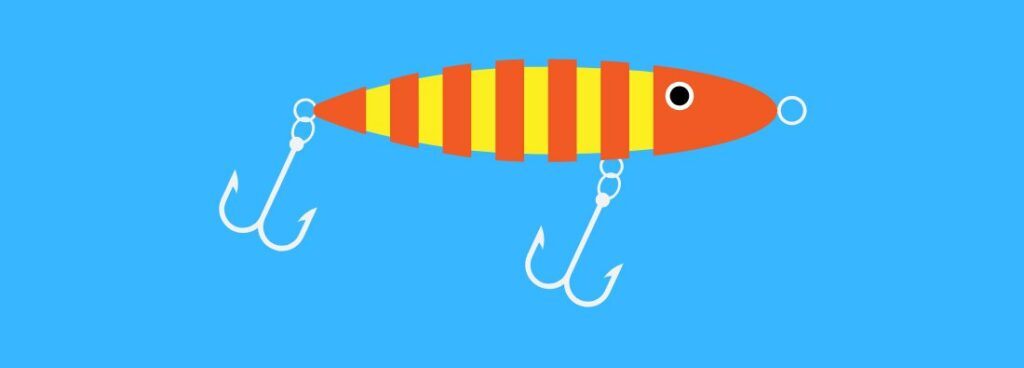Stories Worth Reeling In...
Last Updated on August 7, 2023
Are you sick of using the same old bait and having no success? Have you ever pondered whether or not it would be possible to catch multiple fish species using the same bait?
You’re in luck, that’s for sure! In this article, I will talk about the adaptability of bait and how to choose the right kind of bait for the species of fish that you are angling for.
In this post, we will explore the fundamentals of bait selection, including how to understand the preferences of fish and how to catch bait for the environment.
Get your pole ready because we’re going fishing right now!
Table of Contents
Yes, It’s possible to catch different types of fish with the same bait, but it depends on fish preferences and environmental factors. Having a variety of baits can increase the chances of a successful catch. It’s important to understand the specific preferences of the fish you’re trying to catch and to consider the environmental factors when selecting your bait.
You must utilize bait to tempt a fish to take a bite out of your hook. The three primary kinds of appeal are live, artificial, and natural. Live bait is the most effective. A living organism, such as a worm, a minnow, or a cricket, is used as live bait. This is what the term “live bait” refers to.
An artificial imitation of natural bait, artificial bait can take the form of a rubber minnow or a plastic worm, for example.

The term “natural bait” refers to anything derived directly from the natural world, such as a piece of bread or fruit. Because each has a unique set of benefits and drawbacks, it is essential to understand which one will be most effective for the species of fish you are attempting to reel in.
It is essential to understand the species of fish you are attempting to reel in and the appeal they are most likely to take. There are wide varieties of fish, and each has its own preferences for bait. For instance, it is common knowledge that bass are drawn to worms and crayfish as bait, but trout are known to choose smaller bait, such as insects and minnows. Your odds of making a successful catch will go up due to this.
The environment is another essential factor when deciding what kind of bait to use.
When choosing your bait, it is necessary to consider the time of year, the state of the water, and any other relevant environmental elements.
For instance, during the summers, when the water temperature is higher, fish are more likely to be active and bite on a more extensive range of baits than they do during the wintertime. In contrast, during the winter, when the water temperature is lower, fish tend to be less active and pickier about what they will actually bite into.
Worms, minnows, and crayfish are the three most typical forms of all-purpose bait for predators.
It is common knowledge that baits of this sort are useful for luring in a broad range of fish species, including bass, panfish, catfish, and much more.
Because they replicate the movement and appearance of real prey, artificial lures such as soft plastic worms, jigs, and spinners are also highly popular and adaptable. This is because they may attract a variety of fish species.
In addition, natural baits such as insects, berries, and even bread can be highly effective all-purpose baits, although this does depend on the region and the time of year.
When choosing your bait, it is essential to consider both the unique preferences of the fish you are attempting to capture and the elements present in the surrounding environment.

While some may believe that a one-size-fits-all approach to bait selection is sufficient, experienced anglers know that adapting your bait choices to the specific environment you’re fishing in can make a world of difference.
1. Freshwater Paradises: Lakes and Ponds
Freshwater environments like lakes and ponds offer a diverse ecosystem of fish species with varying preferences. When selecting bait for these environments, consider the following:
2. Rushing Streams and Rivers
Fast-flowing streams and rivers present unique challenges and opportunities for anglers. To succeed in these dynamic environments, consider the following:
3. Coastal Adventures: Saltwater Fishing
Saltwater environments offer a wide array of fish species, each with its preferences. When fishing along the coast, keep these strategies in mind:
4. Ice Fishing Challenges
For those brave enough to venture onto frozen waters, ice fishing brings its unique considerations:
In conclusion, choosing the right bait is an essential component of fishing.
You may improve your chances of making a good catch by being familiar with the fundamentals of bait selection, gaining an awareness of the preferences of the fish, and adapting your bait to the conditions of the water.
Always remember the importance of patience, and don’t be afraid to experiment with various lures. And remember to have an open mind since you never know what possibilities exist. Best of luck to you!